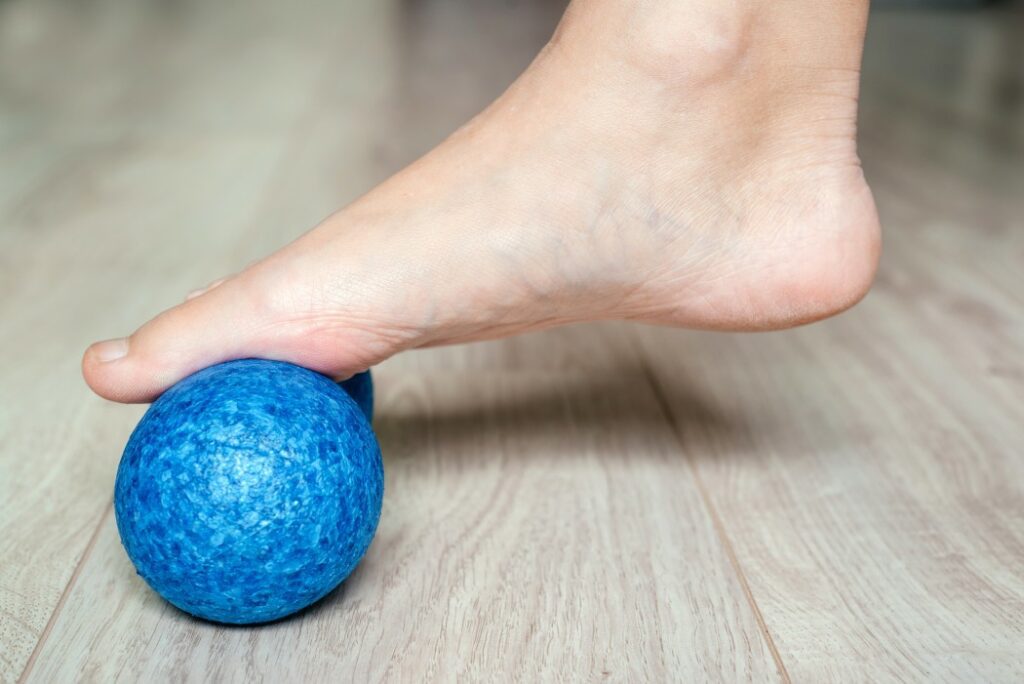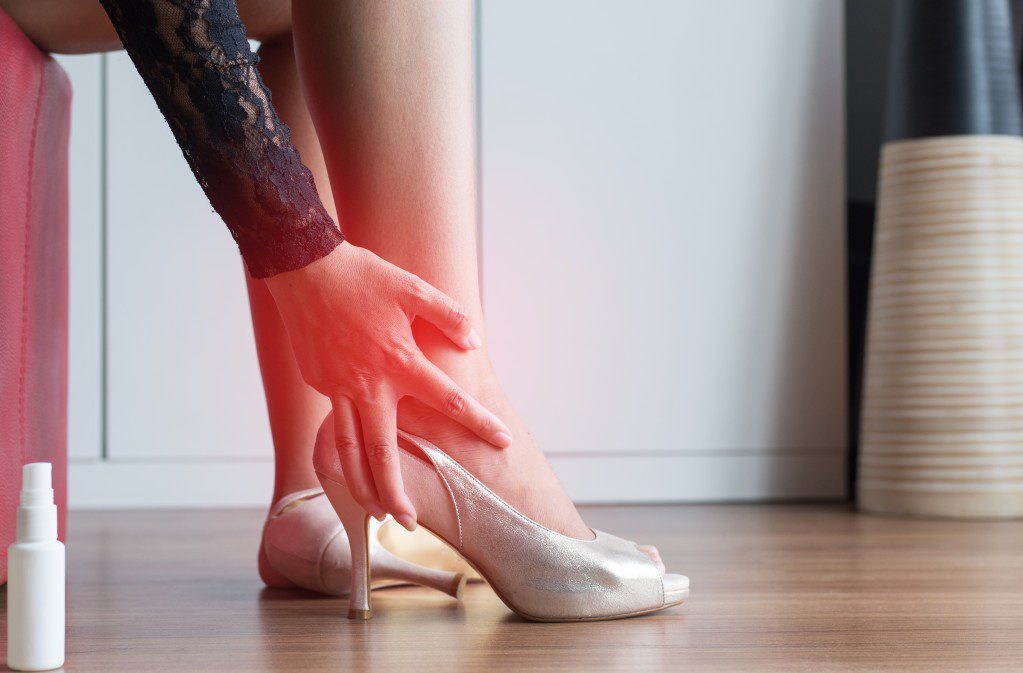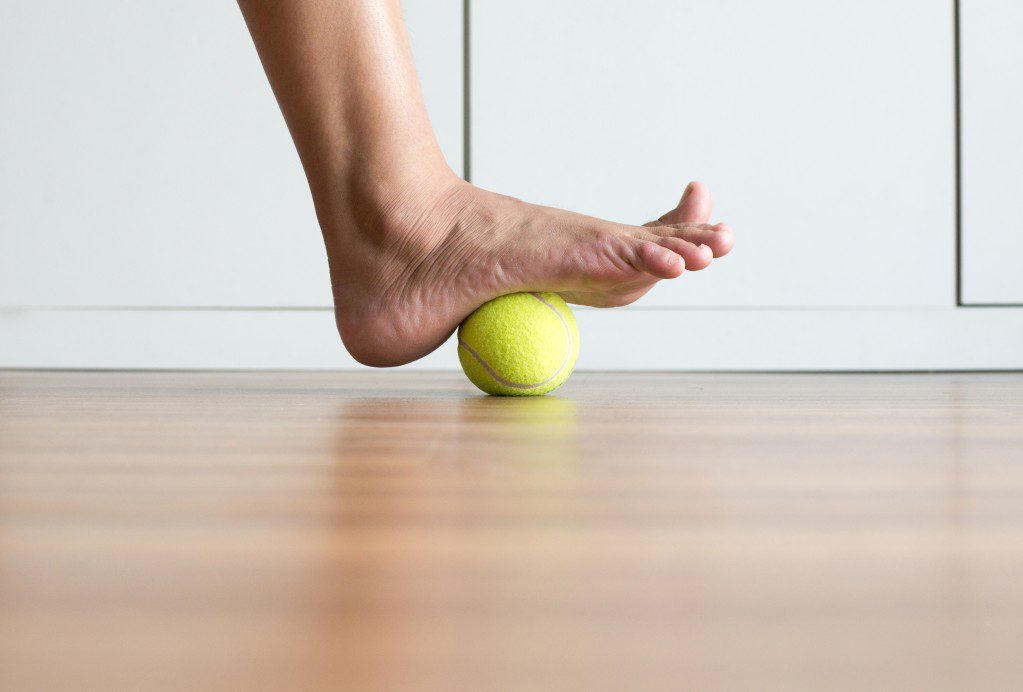

Why Do I Have Heel Pain After Running?
At some point in our lives, we have all experienced heel pain, whether from jumping from a great height or missing a step.
The pain is usually abrupt and ends immediately, but some parts of the foot may have undergone some stress or strain for it to occur.
When running, the movement is dependent on these. They usually end as they start, but what happens if the pain after running becomes apparent each time?
The Anatomy of the Foot
The human foot comprises 26 bones surrounded by more than 100 ligaments, tendons, and muscles that aid in mobility, balance, and support.
Bones
The talus forms a joint with the tibia and fibula of the lower leg.
The calcaneus forms a joint with the talus to form the heel bone.
The tarsals form the foot arch and connect to the metatarsals, which make up the front part of the foot.
The phalanges make up the toes, while the sesamoids lie under the first metatarsal in the foot.
Tendons and ligaments
These maintain the foot’s arched shape.
The central tendon is the Achilles tendon, connecting the calf muscle to the calcaneus. It makes jumping, running, climbing, and even tiptoeing possible.
The main ligament of the foot is the plantar fascia, which connects the back of the foot to the front part of the foot. Other ligaments include the plantar calcaneonavicular ligament and the calcaneocuboid ligament.
What Causes Heel Pain

Heel mobility is made possible by the foot’s tendons, muscles, and ligaments. Injury to one of these structures may result in acute or chronic pain, which any of the following may cause:
- Plantar fasciitis
- Achilles’ tendonitis
- Bursitis
- Heel spurs
1. Plantar fasciitis
It is also known as the runner’s heel or policeman’s heel, and it affects about 10% of athletes, with the pain being acute or chronic. As the foot is sensitive, many injuries could cause heel pain, but plantar fasciitis can be distinguished.
It is characterized by:
- The pain worsens when you step off the bed in the morning or stand after resting.
- You feel better each time you run or work out, but the pain returns when you rest.
- There is a pain when you try to raise your toes off the ground.
- Pain when kicking off at a running start
The Plantar Fascia
This is a thick connective tissue that supports the foot’s bottom side (plantar) arch. It attaches to the tuberosity of the heel bone (calcaneus) and runs laterally to the metatarsal bones.
Its primary role is to connect the back part of the foot to the front. By doing this, it supports the foot’s natural arch.
It is made up of three components:
The medial component: injury to this part causes pain on the inner side of the heel, hence pain on the side of the heel.
The central component: This is the plantar aponeurosis(link), and if it is injured, it causes heel pain in the middle and back of the foot. It is the most significant part of the plantar fascia.
The lateral component: if this part is injured, it causes pain in the outer part of the heel.
Causes of Heel Pain Due to the Plantar Fascia
The plantar fascia is made up of collagen that is prone to wear and tear as it is rigid. Plantar fasciitis may occur due to the following:
- The foot structure
The plantar fascia stretches to accommodate the change when weight is placed on the foot. When this is overdone, or there is repetitive stress on the foot, it could lead to an injury to the plantar fascia.
The foot arch profiles the structure of the foot.
It can be strained during shock absorption if the arch is too high. If it is too low, there won’t be much shock absorption, and both situations could lead to the development of bone spurs.
- Overuse
Runners who use their feet too much without stretching before and after may strain their feet.
Recovery after intense exercise is vital for a healthy foot for an athlete. It is also not advisable to start with high-intensity workouts for a beginner.
- Walking surface

Exercising on hard surfaces overworks the feet due to their shock-absorbing rate. Softer surfaces like sand train the feet’ muscles apart from being gentle on them.
Running on rocky and uneven terrain may lead to foot pain in the long term.
- Gait
This is a person’s walking style. The manner of walking determines the foot placement, which affects the feet indirectly.
A hip or knee injury may cause a person’s gait to change. If the foot is made to accommodate more weight due to the structural change, the foot arch may be strained.
If one foot is injured, leading to a limp, more weight is put on the other foot, changing the walking style that strains the foot.
- Occupation and working conditions
People who spend a lot of time on their feet for an extended time on hard surfaces risk damage to their plantar fascia. These professionals include factory workers, teachers, retail stores, and workers.
Achilles tendonitis
This is a condition that causes pain in the heel and the back of the ankle. It is caused by inflammation of the Achilles tendon.
The Achilles tendon is comprised of tough fibrous tissue that links the calf muscles to the heel bone. If these are overused or injured, it may cause chronic or acute heel pain.
Causes
These conditions may be caused by several different factors, both medical and non-medical.
- It may be caused by a torn or injured Achilles tendon.
- Tight calf muscles reduce the motion of the tendon.
- Poor running style or gait.
- Overweight or obese.
Symptoms
These symptoms differ from patient to patient, but they are commonly characterized by redness and swelling around the injured area. This area may also have bumps that may be visible to the naked eye.
Bursitis
This is caused by inflammation of the bursae, which lubricate the areas where tendons, muscles, and skin meet the bones to prevent friction. They are filled with fluid to serve their purpose.
When running, the heel’s tendons, muscles, and skin have a lot of movement and are lubricated by the bursae. Heel pain occurs when the bursae get inflamed, which may also lead to deterioration of the muscles or tendons of the feet.
Types of Bursitis
Different types of bursitis may cause heel pain.
- Retrocalcaneal Bursitis
Acute or chronic inflammation of the bursae in the areas around the heel causes pain and limited heel mobility.
It may be misdiagnosed as Achilles tendonitis, but sometimes both may occur simultaneously.
- Retromalleolar tendon bursitis

Commonly known as Albert’s disease or Haglund’s deformity, trimalleolar tendon bursitis is formed due to bursitis of the calcaneus tendon at the lower part of the Achilles tendon.
Wearing poorly fitted shoes may also cause heel pain.
Causes
Heel pain before, after, or when running may be caused by bursitis. The bursae may be inflamed due to
- Injury
- Overuse
- Infection
It may also be associated with other diseases such as diabetes, gout, tendonitis, and arthritis. Arthritis is typically treated by Lumbar Radiofrequency Denervation.
Not warming up before running or stretching after running may also cause this. Overuse comes about due to having an intense workout, putting a lot of stress and strain on the heel.
Symptoms
Different people experience different symptoms, but these are common.
- Limited heel motion
- Swelling of the injured area occurs if the inflamed bursae are close to the skin. These spots may also redden.
- Pain when walking
- Wearing shoes becomes uncomfortable
- Stiffness
Diagnosising Heel Pain:
Diagnosing Heel pain can be done using two different methods:
- Imaging
To rule out other types of injury or narrow down the cause of heel pain, x-rays, MRIs, ultrasounds, and other imaging methods are used.
- Tests
The medical practitioner may extract some of the liquid in the bursae to test for infection.
How to Treat Heel Pain
Home treatments are effective in treating heel pain. These include
- Elevating the legs helps blood circulation for faster healing.
- Wearing shoes with slightly raised heel pads or prescribed heel wedges.
- Cold therapy on the heel a few times a day.
- Rest
- Taking prescribed non-steroidal anti-inflammatory drugs (NSAIDs)
The doctor may also recommend a brace, mostly in cases where Achilles tendonitis is involved.
Treating Heel Pain After Running:
Various causes of heel pain can each be treated differently, but the standard forms of treatment include:
Cold therapy
The use of an ice pack on the painful area slows blood flow to the area, thus reducing swelling and pain transmission. It makes the tissues less inflamed and can be used as a secondary form of treatment along with other conventional methods.
Injection
Various injections into the injured area offer or promote pain relief. The injection of PRP (platelet-rich plasma) into the injured area promotes natural, faster healing. In contrast, the injection of steroids and anesthetic offers pain relief and allows for a comfortable healing process.
Surgery
Depending on the severity of the pain, surgery may be the best method to treat heel pain after running, especially if other non-evasive forms of treatment like over-the-counter medication or home remedies fail to work.
Physiotherapy

A patient may be referred to a physiotherapist for stretches and exercises to improve heel mobility and relieve pain. This is often accompanied by medication or an injection.
You may also do these exercises and stretches by yourself with your doctor’s advice. These may be done at home or before and after running.
Orthotic inserts and night splints
Night splints are worn on the foot to keep it flexed to prevent pain in the morning when it is flexed from a relaxed position.
Inserts and heel wedges may be prescribed to be used when wearing shoes. They may be custom-made to fit your situation.
Shock wave therapy
This is a non-evasive pain relief method whereby high-energy sound waves are directed to the painful area. Contact with the tissues signals the brain to facilitate the repair of the injured tissues.
How Can Heel Pain Be Prevented?
Heel pain can be a menace, mainly because we use our feet in our daily mobility activities. Some of the following actions can prevent this.
Foot exercises can be completed at home before setting off for your run. They help increase the foot’s range of motion and improve the overall foot health.
| Activity | Action and Reasons |
| Stretching before and after running | This relieves stress on the tissues of the heel. It also prepares the feet for the activity. Warming up through some light jumps and jogging may also complement this. |
| Ball Rolling | Use a tennis ball, golf ball, or baseball under your foot and run it from the toes to the back of your foot multiple times. Alternatively, you can use a water bottle if the ball is out of reach. This can help ease and treat foot arch pain like plantar fasciitis. |
| Pick-up objects | You’ve probably done this once as a kid, not knowing it’s healthy for your feet. Picking up objects such as marbles strengthens the ligaments and the muscles of the feet. |
| Walking barefoot | Do this on the sand, not just any other surface. It is quite hard to walk on sand than on hard surfaces, which involves your feet more, therefore exercising them. |
| Achilles stretch | The Achilles tendon is an essential part of the general body’s mobility. It aids in walking, running, jumping, and walking up the stairs. You can work the tendon out by doing the following exercises, among many others: 1. Tip-toe workouts 2. Squats 3. Leaning forward with one leg supported by a wall or a chair. |
| Maintaining a healthy weight. | Obesity and being overweight put an extra workload on the feet. The heel pain may start before you consider working out, but hydrotherapy offers a chance to work out the foot muscles with buoyancy to lighten the point load on the feet. |
About Dr. Sean Ormond



